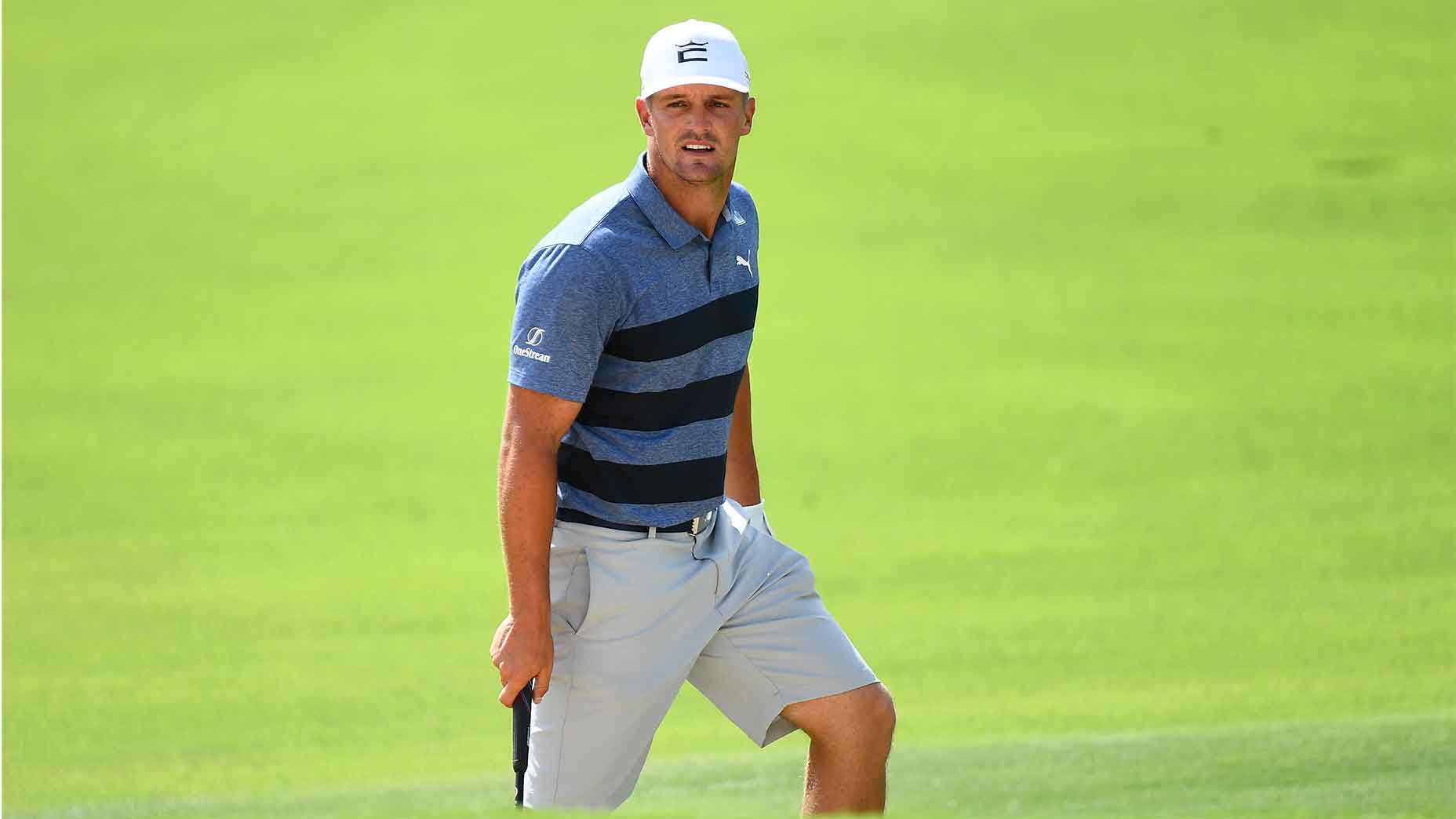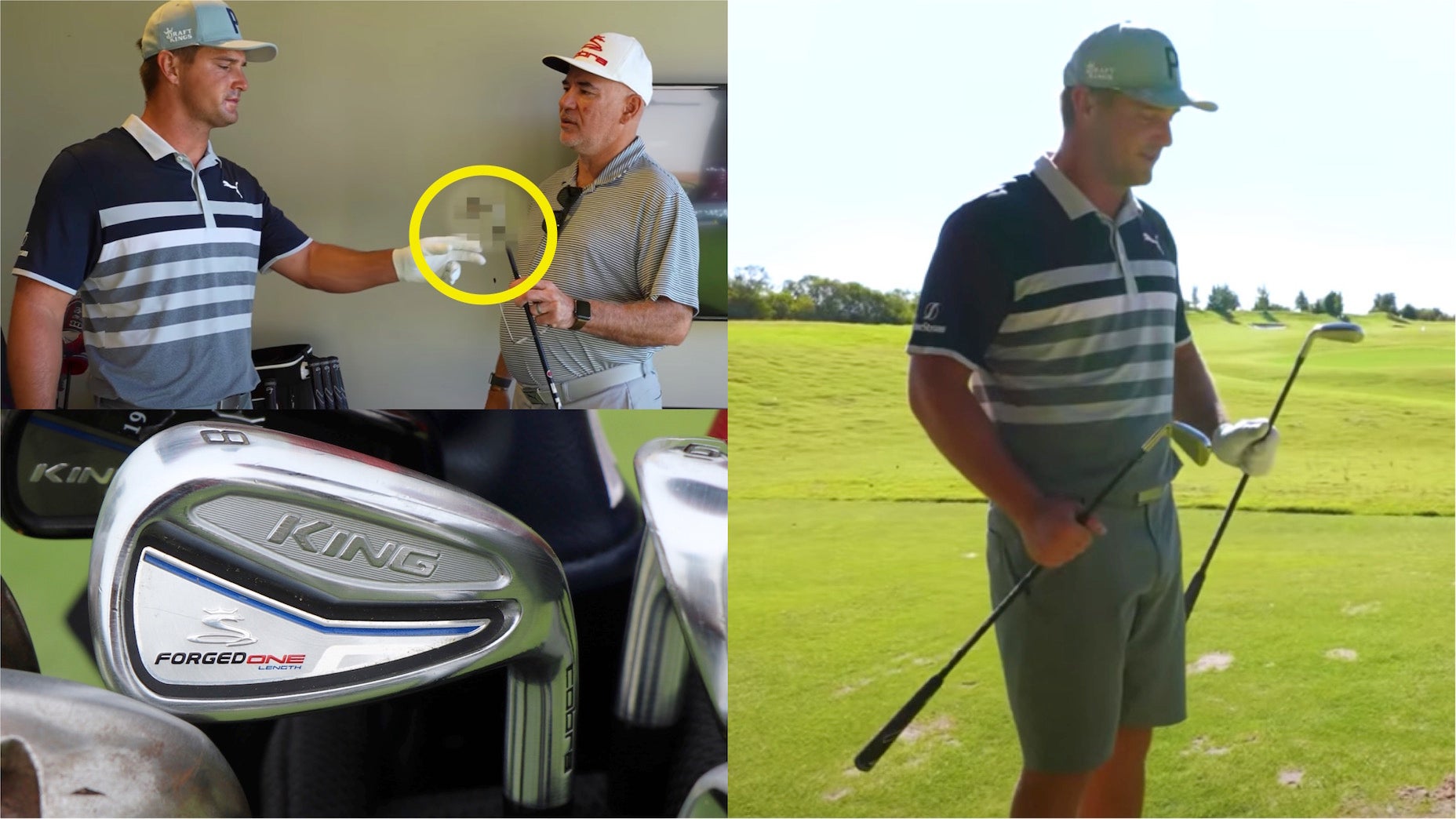
‘It’d be hard to play less than not at all,” says Bryson — an inarguable truth.
Getty Images
If you’d like a glimpse into the leisure rounds of the most polarizing golfer in the world, you’d better look hard, because when it comes to playing for fun, Bryson DeChambeau doesn’t.
“It’s hard to play less than not at all,” he said with a shrug during his appearance this week at GOLF’s Top 100 Teachers Summit.
Bryson is not one for tomfoolery, dilly-dallying, or any other order of wasted time. If he’s on the golf course, he’s there because he’s getting paid. And if he’s not getting paid, you won’t find him on a golf course.
“First of all, I really enjoy executing shots on the practice range,” he said. “From a young age, when I was 15, I was playing from the red tees trying to shoot 58/59 pretty much every day for 4-5 weeks straight. So once I got to a place where I was like man I know how to score. Okay, this is how I strategize this hole.”
In the wake of that growth, Bryson’s interests shifted in a different direction.
“Once I got comfortable strategizing, it all became how repeatable can I be,” he said. “Any plus handicap can shoot 64, but they get out on Tour and they can’t make a cut, and why is that?’ People think it’s a mentality issue but it’s not, it’s a repeatability issue. People aren’t looking at the root issue.”
And so, DeChambeau set out on the path toward repeatability. The goal, he says, was to give his game an element of emotional invincibility.
“It’s not the pressure or the mentality. [A mini tour player] should be able to play and shoot 65 in the worst emotional state. If you can do that, like you were a robot, it wouldn’t be an issue,” he said. “So for me, and going back to my practice, it’s solely about executing the practice shot time after time again. It’s all about repeatability and consistency in that matter, and your deviation from the norm, and how deviant is it going to be when you mishit a shot.”
With that ultimate goal — repeatability — in mind, it’s somewhat easier to understand Bryson’s other competitive idiosyncrasies: the single-length irons, arm-lock putting, even his notoriously finicky approach to equipment. The goal of it all isn’t to perform, but rather to find the same performance again and again … and again.
Still, that doesn’t make his approach to practice any less, well, weird.
“I am literally trying to hit the same shot every single time,” he said. “I’m trying to master one shot, one swing. If I can get to the point where I’m mastering one shot, there’s no reason I shouldn’t be able to execute it on the course.”
Take, for example, his warmup, which isn’t about actually tailoring his game to the course, but rather, the opposite. Instead, Bryson’s warmup is dedicated to understanding how far he’s deviating from his baseline, and then, to understanding how that deviation factors into everything else.
“I only practice on the range to get my deviation numbers, after I do that, I’ve got a good understanding of how I’m going to play on the golf course that day. The practice range is the same as the golf course for me. Then it’s just about distances and fairway width, trouble width, and then how consistent my wedging is and how far I can hit the driver. That’s really it.”
If he does it all well, DeChambeau says he’ll head to course both with a consistent, repeatable shot and what he describes as a built-up tolerance to air resistance throughout his swing.
“For me, I’m in my own head,” Bryson said. “When I’m over the shot, I’m not thinking about imagining exactly how it’s going to go through the air and fall on the green. For me, I’m thinking about how I need to apply force to the club. It’s all feeling, how I’m feeling to get that repeatability. So then I just try to refine that and refine that until I’m less sensitive to air. So that’s me in my own head, and that’s how I’m able to transfer it to the golf course so easily, because I’m feeling all of those things.”
It’s only crazy if it doesn’t work, sure, but it’s a little strange.









